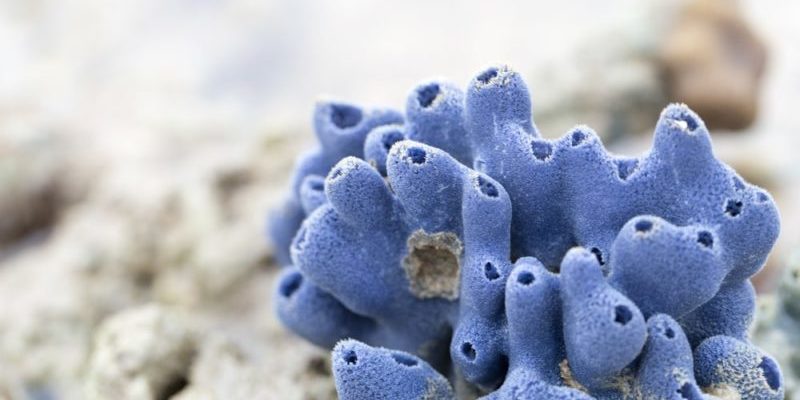The poriferous or sponges are invertebrate aquatic animals belonging to the sub-kingdom of the Parazoa. It is believed that there are between 5,000 and 10,000 species of poriferous currently worldwide. For instance: leucosolenia, sycon, agelas oroides.
Although most live in salty water, some varieties live in fresh water. Since they are animals almost immobile (since they can only move up to 4 millimeters in a day) they live at the bottom of the water (up to 9 thousand meters deep).

Poriferous feeding
The poriferous they have no stomach: they feed through a process of absorption of nutrients that are transferred by the water and enter their pores.
Their diet depends on the water currents and, after conserving the necessary nutrients, they expel the water. There are some exceptions of carnivorous porifers that feed on crustaceans, algae or cyanobacteria.
Poriferous structure
These invertebrate animals do not have muscles, internal organs, or nerves. its structure presents radial symmetry and is composed of two layers of cells: an external (pinacoderm) and another internal (coanoderm) and, eBetween the two, a space that receives the name of mesohilo.
- Outer layer (pinacoderm). The outer layer has a large number of pores and is made up of cells called pinacocytes and is lined with a special cell called porocyte.
- Inner layer (coanoderm). The inner layer is made up of cells (called choanocytes) that allow the passage of water with nutrients for feeding to occur.
- Intermediate space (mesohyl). Between the two layers there are different support, feeding and reproductive cells. The latter are totipotent cells, that is, cells that have the ability to grow, divide and form completely independent organisms.
Classification of porifers according to their structure
Depending on its structure, it is possible to classify it into three different groups of porifers.
- Calcareous.
- Asconoids. They are tube-shaped and their structure is the simplest of the three. They are small in size with a tubular shape.
- Siconoid. They are larger and more complex than the previous ones and the flow of water that circulates through them is higher.
- Leuconoids. It is the most frequent structure among the poriferous and its shape can be varied: branched, tubular, flat, etc.
- Sponges. Almost all marine porifers fall into this category, widely used for drug exploration.
- Hexactinelides. They have siliceous spicules, a hexagonal appearance, and the ability to weld their spokes.
Reproduction of porifers
These animals reproduce asexually or sexually, depending on each species.
- Asexual reproduction of porifers. There are three different ways to reproduce:
- By fragmentation. The sponge divides and its genetic material is duplicated, generating a new identical but independent organism.
- Detachment of gemmules. It is a type of asexual reproduction through the shedding of complex buds.
- Sexual reproduction of porifers. Most sponges are hermaphrodites, that is, they have both sperm and eggs inside. Fertilization occurs externally: the eggs and sperm are expelled and there are fertilized.
Examples of porifers
Calcareous porifers or calcareous sponges
- Leucosolenia
- Sycon
- Leucandra
- Leucilla
- Lithonida
- Baerida
- Murrayonida
- Clathrinida
Poriferous demospongiae or demosponges
- Agelas oroides (Agelasida)
- Chondrosia reniformis (Chondrosida)
- Spongia officinalis (Dictyoceratida)
- Spirastrella cunctatrix (Hadromerida)
- Phakellia sp. (Halichondrida)
- Petrosia ficiformis (Haplosclerida)
- Oscarella lobularis (Homosclerophorida)
- Phorbas tenacior (Poecilosclerida)
- Aplysina aerophoba (Verongida)
- Red volcano sponge (Acarnus erithacus)
Poriferous hexactinelides
- Lyssacinoside
- Lychniscosida
- Hexactinoside
- Aulocalycoida
- Amphidiscoside
- Farrea sollasi
- Pheronema carpenteri
- Euplectella aspergillum
